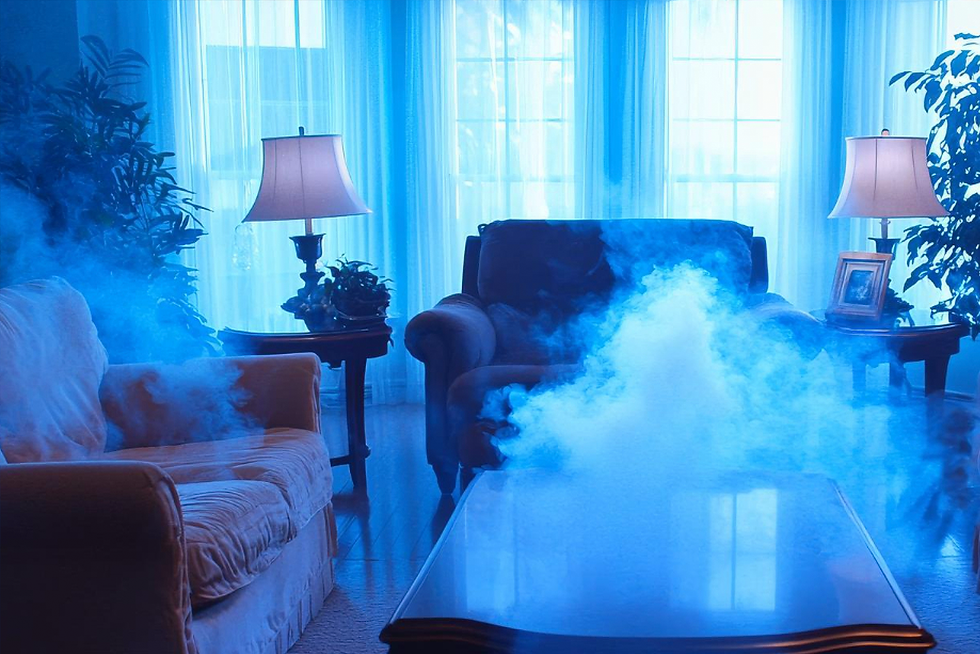Bioaerosol Laboratory Result Interpretation
- Corey Provencal

- Mar 4, 2010
- 3 min read
There are no government-issued numerical standards for mold interpretation. However, use the following arbitrary numbers for guidance in interpreting microbial survey results.
Bioaerosol
•1,000 CFU/m3 Active Growth/Sporulation •>5,000 CFU/m3 Very Active Growth/Sporulation Our final mold interpretation is not based solely on the spore count numbers. Information gathered from the visual inspection of the areas sampled is very significant, including sources of moisture or high humidity, areas of elevated particulate matter, and signs of visible mold growth.
In air samples, it is important to consider the type and concentration of fungi indoors, as compared to outdoors or a non-complaint area. We take into consideration the indoor versus outdoor fungal count ratio, the presence or absence of certain fungi indoors versus outdoors, the genus and/or species of predominant fungi indoors versus outdoors.
The indoor versus outdoor comparisons is not focused on the (absolute) concentrations, but the (relative) percentages of those small spores when doing indoor versus outdoor comparisons.
All of our testing is hypothesis-driven. Measurements of outdoor spore concentrations in the context of indoor air quality have one and only one purpose. The purpose is to test the hypothesis of whether you have an indoor source of airborne spores or not. We do this by determining if the spores in your indoor air samples may have infiltrated from outdoors at the time of testing.
If the interpretation of the results of your carefully designed sampling strategy shows that spores in the indoor samples did not come from outdoors, then there is a source of indoor spores that needs investigating and/or cleaning. The source can be from building materials or personal contents such as moldy books, moldy orange in the trash can, recent water damage, etc.
If indoor airborne spores are all from outdoors, those small spores (less than 10 microns) should be in similar percentages (doesn’t have to be identical) to those in outdoor air. They are similar in sizes, so they settle or get filtered out in similar rates. If indoor spore profiles (percentages of different spores) look very different from those found outdoors, something must have been added to the indoor air to change that profile.
The elevated air sample results have to be confirmed by the discovery of the mold growth source or the Cause and Origin of the mold growth. Without the cause and origin corrections cannot be made to return the home to an S-520 Condition 1, Normal Fungal Ecology.
Spores do not grow in the air. They grow on wet surfaces. You should always start and end with visual confirmation of the presence or absence of mold spore reservoirs, or growth, based upon a visual inspection with an understanding of where and how to find moisture problems.
Health risk from mold is not about spore counts. There is no way to associate airborne spore levels, per se, with any particular health risk (other than perhaps risk of certain types of invasive fungal infection in immune-compromised people).
We also look for the presence of hyphae fragments along with the actual spores when interpreting the lab results. The hyphae are individual filament or thread that make up a fungus and a hyphae fragment is a portion of the fungal mycelium that does not have any spores or other diagnostic fungal structures, and could not be identified but is indicative of actual fungal growth.
The final interpretation of the laboratory results are delivered in the reporting of the areas sampled as being at an S-520 Condition 1, 2, or 3 at the time of sampling.
John P. Lapotaire, CIEC Certified Indoor Environmental Consultant Microshield Environmental Services, LLC www.Microshield-ES.com









Comments